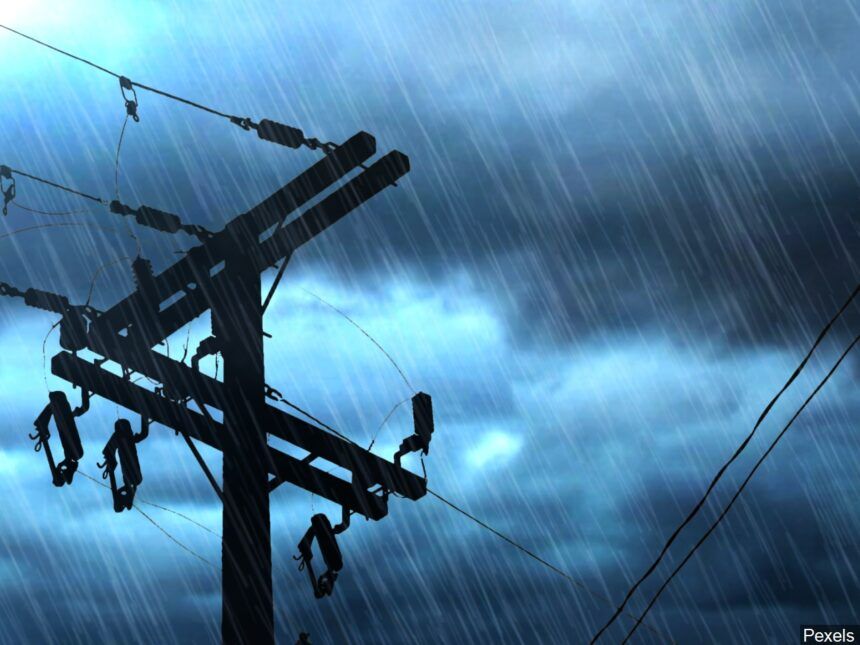First responders monitoring rainy weather conditions for possible hazards
CENTRAL COAST, Calif. (KION) First responding agencies across the Central Coast are monitoring weather conditions that could cause possible hazards, including mudslides, rockslides and downed trees and power lines.
KION forecasters are expecting rain on Sunday and tracking stronger system will arrive late Tuesday into Wednesday morning.
“We’re definitely going to see the most extreme system we’ve seen so far this year and probably one of the strongest we’ve seen in the last couple years,” KION Chief Meteorologist Dann Cianca said. “It’s an atmospheric river of moisture that will be spraying from north to south across our viewing area starting on Wednesday.”
Cianca expect this to be the strongest period of rain for the Santa Cruz mountains this year.
The downpour could cause some hazards on the roads and in the mountains, including small stream flooding and winds that could bring down trees and take out power lines.
CAL FIRE is monitoring burn scar areas from August 2020 wildfires for potential mudslides.
The Big Sur coast is expected to get the brunt of the storm on the Central Coast, which was devastated by the Dolan Fire last year.
Big Sur Fire Chief Matt Harris said to avoid Big Sur unless it’s essential.
“With the recent Dolan Fire on the coast and the traditional instability of the coastal slope, there’s really no reason be in Big Sur during a major storm event,” Harris said.
As for what residents should do to prepare, Harris recommends getting together food and water and propane to wait out the storm inside and avoid hazardous conditions.
Up north, this storm comes after thousands of residents in the Santa Cruz County lost power when high winds hit the central coast last week.
PG&E is encouraging customers to be prepared for this new system and have a plan in case of outages.
If you see a downed power line, Report it immediately by calling 911 and PG&E at 1-800-743-5002.
PG&E STORM SAFETY TIPS:
• Never touch downed wires: If you see a downed power line, assume it is energized and extremely dangerous. Do not touch or try to move it—and keep children and animals away. Report downed power lines immediately by calling 911 and by calling PG&E at 1-800-743-5002.
• Use flashlights, not candles: During a power outage, use battery-operated flashlights, and not candles, due to the risk of fire. If you must use candles, please keep them away from drapes, lampshades, animals and small children. Do not leave candles unattended.
• Have a backup phone: If you have a telephone system that requires electricity to work, such as a cordless phone or answering machine, plan to have a standard telephone or cellular phone ready as a backup.
• Have fresh drinking water, ice: Freeze plastic containers filled with water to make blocks of ice that can be placed in your refrigerator/freezer during an outage to prevent foods from spoiling. Blue Ice from your picnic cooler also works well in the freezer.
• Secure outdoor furniture: Deck furniture, lightweight yard structures and decorative lawn items should be secured as they can be blown by high winds and damage overhead power lines and property.
• Use generators safely: Customers with standby electric generators should make sure they are properly installed by a licensed electrician in a well-ventilated area. Improperly installed generators pose a significant danger to customers, as well as crews working on power lines. If using portable generators, be sure they are in a well-ventilated area.
• Turn off appliances: If you experience an outage, unplug or turn off all electrical appliances to avoid overloading circuits and to prevent fire hazards when power is restored. Simply leave a single lamp on to alert you when power returns. Turn your appliances back on one at a time when conditions return to normal.
• Safely clean up: After the storm has passed, be sure to safely clean up. Never touch downed wires and always call 811 or visit 811express.com at least two full business days before digging to have all underground utilities safely marked.
Other tips can be found at https://www.pge.com/en_US/safety/emergency-preparedness/emergency-preparedness.page?WT.mc_id=Vanity_beprepared
Click here to view the PG&E outage map: https://pgealerts.alerts.pge.com/outages/map/


